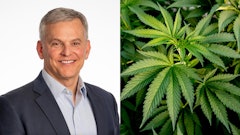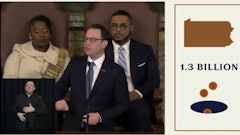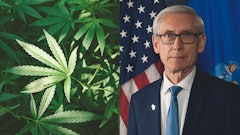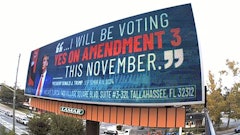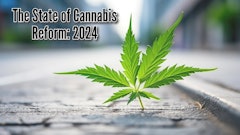

In January 1972, on his late-night TV stage, Dick Cavett interviewed Dr. Tom Ungerleider and ex-Pennsylvania Gov. Raymond Shafer, both from President Richard Nixon’s Commission on Marijuana and Drug Abuse, which later became known as the Shafer Commission.
During the interview (for which Tom, a cowriter of this column, was in the audience), Cavett pressed Ungerleider, a UCLA psychiatrist, for a conclusion that marijuana did no harm. While admitting that the commission had found no particular problems with cannabis use, Ungerleider insisted that the commission’s findings were yet to be released. Shafer then cleared his throat and announced that although the commission had found that the use of cannabis did not lead to death, the commission had many concerns that warranted further investigation.
The bowl-shaped auditorium exploded in jeers, with apparently everyone in the audience throwing everything at hand—hats, scarves, books and, especially, joints—at the stage. The joints made shiny, red arcs through the darkness.
Cut to commercial.
A Minor Issue
This was 1972, and still the audience recognized the lie and responded appropriately. Despite this, people were more concerned with other lies floating around at the time, most notably about Vietnam.
In the end, the Shafer Commission, stacked by Nixon, surprised everyone, especially Nixon, with its conclusion that the “possession of marihuana [sic] for personal use … no longer be an offense, [and that the] casual distribution of small amounts of marihuana for no remuneration, or insignificant remuneration not involving profit, no longer be an offense.”
Nixon ignored the recommendation, and the Drug Enforcement Administration (DEA) maintained cannabis as a schedule 1 drug with no accepted medical use and a high potential for abuse.
Nixon’s lie about marijuana, which became the government’s lie, never became politically significant, although the lie continued as a sideshow through the Reagan years and up through Jeff Sessions’ term as attorney general. The lie does not win or lose elections, nor does it balance or destroy budgets. The lie, however, has never been harmless. The lie corrupted entire countries, created violent, criminal gangs of international stature and devastated lives by making criminal histories out of harmless behavior.
Decades later, the lie continues to claim its victims, except it shifted from cannabis being a “gateway drug” to not having any “randomized, double-blind, placebo-controlled (RDBPC) studies” to prove medical efficacy.
Most people continue to find themselves with other problems more pressing than this new lie, and in the federal and state political arenas, the lie remains a sideshow. Today, issues around cannabis (contaminated products in the illicit market, banking, 280E, testing, etc.) are important to our industry, but not so much to people concerned with the ongoing international trade war or with the potential for a military war or with other large problems. At the state level, cannabis will never be the largest source of taxes. At the local level, whatever they might have done in college, many people raising families and making mortgage payments find cannabis to be a distraction to their day-to-day duties and problems.
Some Americans, nevertheless, have had good reason to make access to cannabis the most critical issue in their lives. For example, conventional medical solutions for pediatric epilepsy patients can be problematic, with side effects that may include drowsiness, mood swings and irritability. In some cases, they may not be very effective, either.
Pediatric epilepsy patients are not the only Americans with life-threatening conditions seeking relief through cannabis. Some patients with chronic, sometimes fatal conditions, such as glioblastoma, a type of brain cancer that yields a grim 15-month median life expectancy, have turned to cannabis as an alternative to opioids, which their doctors had prescribed within the standard of care.
Why has it taken so much suffering to get around the big lie? What about the patients who died without any possibility of relief? Please note that none of us argue that cannabis will cure all conditions or make anyone live forever. We do, however, argue that marijuana should be considered a product with uses that either do no harm or that really help some people.
Beyond Double-Blind Studies
Many in the medical community continue to express extreme skepticism regarding the use of cannabis for any purpose, often basing their arguments on the lack of RDBPC studies that the U.S. government has prevented for at least 50 years, as those doctors should know. In light of evidence from RDBPC studies in other countries and from non-RDBPC science in the U.S., one must question the simple fear, the trade-offs, the fatalism, the complacency and the intellectual honesty of that portion of the medical community.
The federal restrictions on RDBPC studies with respect to cannabis have blatantly stopped scientific work that may produce results some might find inconvenient. Unfortunately, Americans are all too familiar with federal limitations on science producing conclusions that might interfere with various political positions.
Yet, RDBPC studies haven’t always been deemed necessary. The entire U.S. over-the-counter (OTC) drug industry, primarily based on the U.S. Food and Drug Administration’s (FDA) OTC monograph process, thrives without the necessity of RDBPC studies. Beginning in 1972, the FDA accepted data and testimonials from interested parties (manufacturers of OTC drugs) and reached conclusions as to whether the thousands of OTC drugs in question should be categorized as “generally recognized as safe and effective.”
Most of the drug products on the consumer shelves of drug stores in the U.S. received their approvals as drugs through this process. These are the drugs that populate the front end of drug stores, excluding only the drugs behind the prescription counter. We note that the absence of RDBPC studies for OTC products does not seem to be cause for concern among most U.S. doctors. (“Take two aspirin and call me in the morning” without any RDBPC studies!)
Political Strength
For many Americans, the government’s and medical establishment’s responses regarding the development of cannabis products have not been satisfactory. These people have influenced state legislatures, with 33 states legalizing cannabis for various medical conditions (not counting CBD-only states), with 11 of those states also legalizing general adult use. The government’s position on marijuana and the medical blather about the need for RDBPC studies haven’t prevented Americans from demanding their state legislatures push back against the big lie.
We are very pleased with the progress that the majority of states have made on this issue. We are happy that the majority of state legislators have understood the political reality that most Americans reject the big lie. We would be happier if just as many state legislators really understood the big lie, the issues around it, and the benefits that an intelligent approach to cannabis products might bring.
Some cannabis products should be developed through research. Others simply should be consumer products that meet conventional purity and consistency standards. We are all aware that there is a better way for us to live with cannabis.
We find an odd collection of liars in our way.








